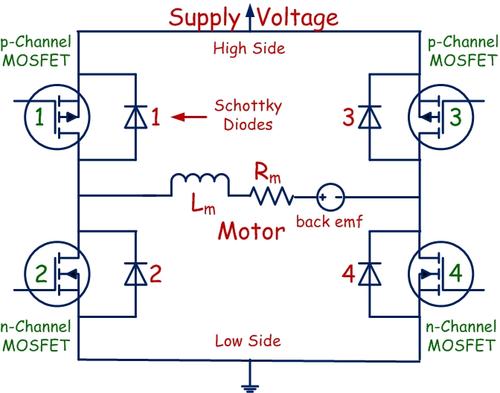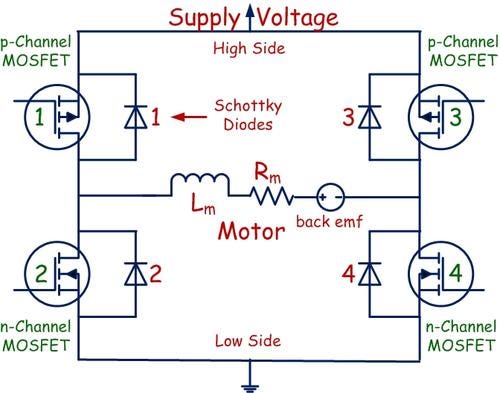H-Bridge: Black Box or Are Details Important?
December 23, 2013

Engineers in all disciplines use electronics in their designs for sensing, actuation, and real-time control. Today there are few exceptions. A common component is an operational amplifier (op-amp), which most engineers treat as a black box containing many transistors and resistors. Its performance is primarily determined by the components (e.g., resistors and capacitors) surrounding it as long as the op-amp has negative feedback and its limitations are not exceeded.
Another common electronic component is the H-bridge. Any engineer who has ever controlled a motor has most likely used the H-bridge, but perhaps treated it as a black box with no thought as to how it works and how it affects overall system performance. The H-bridge needs to be thoroughly understood for model-based design and optimum system performance.

The H-bridge, as shown in the diagram, is named because of its configuration. It has four switching elements (transistors, MOSFETs are a good selection, p-channel for high side, and n-channel for low side) with the load (usually brushed DC or step motor) at the center. The diodes are of the Schottky type with short turn-on delay. The four transistors can be turned on and off independently. If transistors 2 and 3 are turned on, the motor turns in one direction. Turn transistors 1 and 4 on and the motor turns in the opposite direction. The transistors are usually controlled in a pulse-width modulated (PWM) fashion. When the transistor is on, it behaves like a small temperature-dependent resistor -- the lower the value the better for heat dissipation.
When the transistor is completely off, it conducts no current. MOSFETs are voltage-driven devices. The gate forms a parasitic capacitor with the source, and this capacitance limits the speed at which the transistor can be turned on and off. In the transitional periods, the power dissipation due to switching is significant, especially when the switching frequency is higher than a few hundred hertz (Hz). The role of the diodes is often overlooked and they are intrinsic in MOSFETs. While the bridge is on, two of the four transistors carry the current and the diodes have no role.
However, once the bridge is turned off, the transistors will not conduct current. When the load is inductive, as with motors, the electromagnetic field associated with it will collapse when the transistor is turned off and the diodes provide a low-resistance path for that current to flow and thus keep the voltage on the motor terminals within a reasonable range. The dissipated heat from the diodes can be of the same order of magnitude as the heat dissipation from the transistor switching.
The load (motor) is modeled as an inductor (Lm), resistance (Rm), and speed-dependent voltage (back emf) in series, the values of which are all dependent on motor rotor position. The motor torque is proportional to the current flowing through this series combination. There are two extremes. When the motor runs with no load, the current is low and the motor terminal voltage is close to the back-emf voltage. When the motor is stalled, the back-emf voltage is zero and the motor acts like an inductor.
The H-bridge can be driven in many different ways. In general, the on-time behavior is rather simple: Turn on one high-side transistor and the opposite low-side transistor to allow current to flow through the motor. It is the off-time drive that makes the difference. Since transistors 1 and 2 (or 3 and 4) should never be turned on at the same time, there are only three different combinations for those two switches: Transistor 1 conducts, or transistor 2 conducts, or neither conducts. There are many different drive modes. Andras Tantos has provided an excellent, detailed explanation, and I highly recommend it.
A black box approach to some commonly used devices is justified, but the H-bridge is not one of them.
Related posts:
About the Author(s)
You May Also Like



